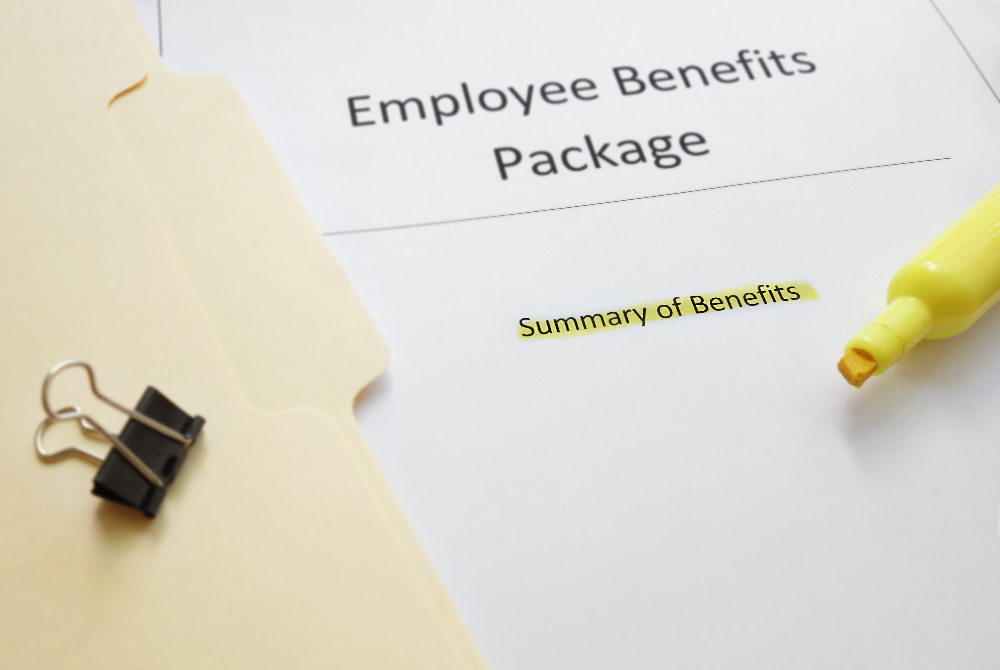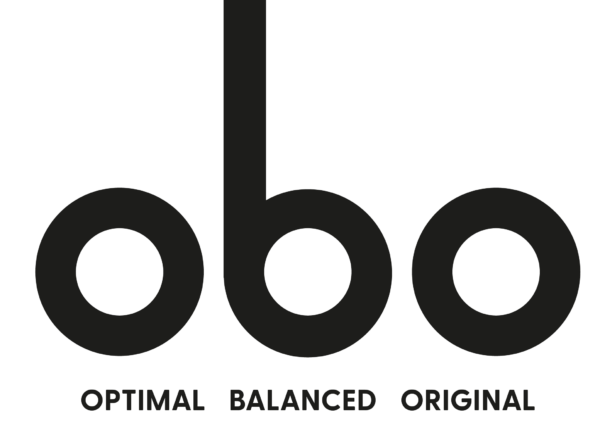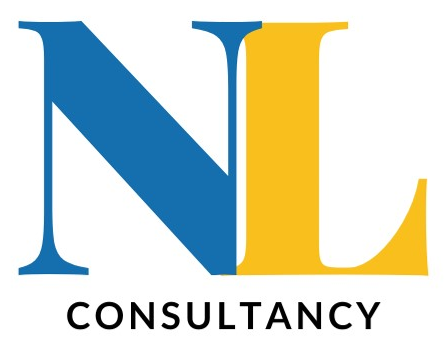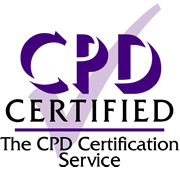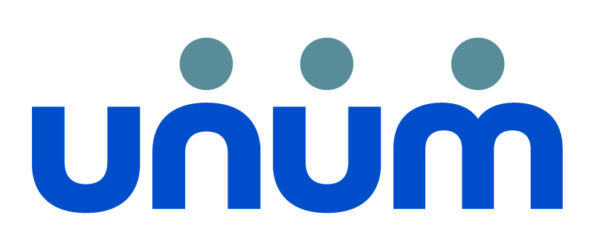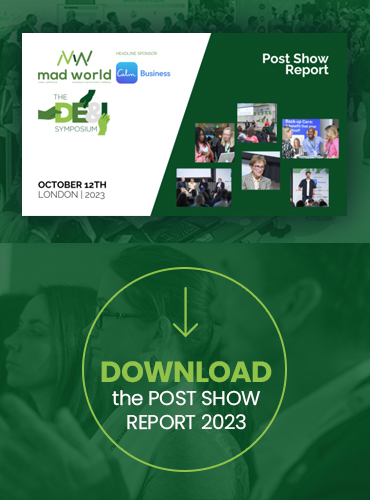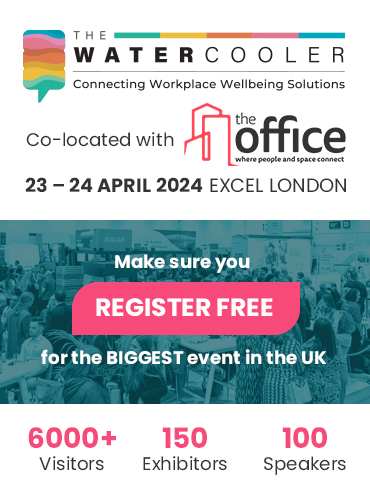The 6th annual MAD World Summit
After months of eager anticipation, the annual MAD World Summit came to life in person on October 12th in the heart of Central London. The event was a resounding success, with 970 attendees exploring inclusive workplace culture, mental health, and wellbeing content and solutions. With a diverse array of over 140 speakers, the summit proved to be a remarkable meeting of cross-sector employers in pursuit of insights and inspiration.
The MAD World Summit, renowned for its thought leadership in mental health and diversity, delivered a truly memorable experience this year. Attendees from various sectors came together to engage in conversations, share knowledge, and find solutions that promote a more inclusive and mentally healthy workplace.
One of the standout features of this year’s event was the inauguration of the Diversity, Equity, and Inclusion (DE&I) Summit. This addition emphasised the growing significance of DE&I in today’s workplace landscape and provided a dedicated space for exploring the synergies between mental health, diversity, and workplace culture.
The MAD World Summit 2023 was a celebration of insights, inspiration, and collaboration, and it set the stage for positive change in the realm of employee mental health & wellbeing, diversity, and workplace culture. It’s an event that will leave a lasting impact on the way organisations approach these vital topics. 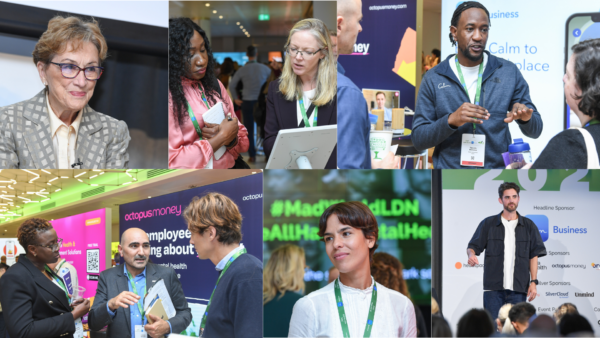
Key topics to be discussed:
- What you need to know to invest wisely in workplace wellbeing
- Wellbeing washing: – what it is, why it matters and how to overcome it
- The future of work through the lens of workplace culture, mental health and wellbeing
- Meeting the wellbeing needs of different working demographics in a hybrid world of work
- Safeguarding the health of the nation – getting people back to work effectively
- Creating a leadership playbook for a mentally-well organisation
- Measurement of workplace wellbeing – using data to elevate your strategy
Next year, the MAD World Summit will take place on October 17th, 2024. If you are interested in participating.
We'll Be Sharing
Latest Make A Difference News

When you are responsible for protecting the wellbeing of others, it can be easy to forget about your own mental health. Navigating through a multitude of challenges, today’s leaders need to prioritise self-care to avoid burnout while providing support to their teams. From practising intentional recovery to reframing perception, here are seven ways leaders can cope with stress in a demanding work environment.
Dedicating time for recovery
To effectively manage a company or team, leaders need to be able to handle the pressures that come with it. But pressure and stress are two different things. Prolonged high levels of pressure will trigger a stress response that’s why it is crucial to take proactive steps before it happens, says Vicky Smith, Senior Consultant at WorkingWell.
“In the rush of things, leaders often forget to grant themselves a break. But to sustain a high level of performance, you need to practise intentional recovery. By intentionally recovering your energy every 90-120 minutes, you can be at your optimum for most of the day and achieve personal sustainability that will help you cope with stress,” notes Smith.
Intentional recovery is crucial not only for leaders but for their teams too. “You should build it into your organisational culture and show people that taking regular breaks between tasks is an encouraged practice,” she concludes.
Investing in external support
Whilst leaders may be prepared for their technical role, often they are unprepared for the psychological and emotional intricacies associated with their position. This is why working with an independent professional coach and mentor can be invaluable when handling stressful situations, says David Roche, author of “Become a Successful First-Time CEO”.
When feeling stressed, leaders can struggle to see the best route forward. But David points out that an experienced coach/mentor not only helps the individual to find their own best route, but can also provide practical advice, leaving leaders empowered to take steps forward.
For Roche, engaging a professional coach and mentor is a relatively minor investment, but has major long-term commercial and personal payback. “Leaders need a safe sounding board and a wise head to help think things through and by implementing a coach/mentor into your routine, the positive results can be dramatic,” he explains.
Empathy as a foundation
Leaders seeking to mitigate the negative impact of stress in the workplace need to treat themselves and others with kindness and empathy. As Sue Musson, author of “Firecracker Leadership”, says, “Think of the aeroplane safety demonstration; you need to put your own mask on first before you can help others.”
Leaders should put on their own stress management mask first by checking resilience levels and boosting any areas that are flagging, focusing on eating well, moving well, thinking well and sleeping well. They can then assist others. Asking a simple, “Are you ok?” can be the key to unlocking conversations about stress and resilience, fostering a culture of care and understanding.
“Leading with empathy is so important in managing workplace stress, but avoid absorbing negative emotions without perspective and a solution focus. Leaders should keep their head (analytical), hands (technical) and heart (emotional intelligence) skills in balance,” argues Musson.
How helping others, helps you
When employees are overwhelmed by stress, it has a huge impact on a leader’s own wellbeing. Whilst it is essential leaders are aware of the stress levels of their teams, there should also be a focus on individual resilience and ownership so teams feel empowered to problem-solve where they can before escalating to the leaders, explains Jeremy Blain, author of “Unleash the Inner CEO”.
Blain highlights how this can be achieved through distributed leadership and building a more horizontal organisational structure. “By creating an organisational culture that prepares their team with the skills to step in, step out and step up, leaders can feel more confident their team is empowered to navigate workplace challenges independently,” says Blain.
“Of course, it is essential leaders are available to support their team through stressful situations, but by investing in building individual, team and organisational resilience too, leaders mitigate bigger problems further down the line,” argues Blain.
The power of delegation
The personal weight of responsibility and tough decision-making can be overwhelming for leaders. When steering the ship, the pressure of trying to spin many plates can cause intense levels of stress. Rather than try to manage the business single-handedly and be the go-to person for everything, Alexis Sikorsky, author of “Cashing Out”, advises leaders to lean into the skills of others and delegate to those most skilled in that area to help manage personal stress.
In Alexis’ own career it took him fifteen years to realise that whilst he might be quite a good leader, he was actually not as skilled at managing. Rather than becoming stressed trying to plug that gap, he placed his focus on creating a vision and motivating other people to make a plan that will take the business there.
“As the captain of the ship, it is essential you’re protecting your wellbeing. If you lack the skills you need, rather than dwelling on this as a weakness, instead go and find somebody who has them. You will save yourself stress in the long run and set everyone up for success,” says Alexis.
Reframing perception of stress
In recent findings by The Workplace Health Report, 54% of people agree that the perfect amount of stress enables them to thrive. Adopting stress as a catalyst can serve as a powerful mindset tool for achieving success and also in the way managers lead others.
Dr Lisa Turner, Mindset and Resilience Expert and Founder of CETfreedom, advocates it can be useful; “If we are able to identify our physiological and emotional responses to stress and redirect that energy towards concentration, productivity and effectiveness, we can choose to view stress as a motivating factor enabling us to push towards peak performance.”
Lisa explains, “Just the right amount of stress is not only helpful but essential for accessing a flow state. This is a state where the individual is completely immersed in the task at hand, it feels joyful and triggers a sense of accomplishment and achievement. But to access deep flow we need the perfect skills-challenge balance. Too much stress and we can’t get into flow, too little and we will be bored. Finding your personal flow triggers is key to accessing flow.”
Connecting with your emotions
As the key person in an organisation that people turn to leaders can feel pressured to uphold certain expectations, thinking not showing emotions such as stress makes them appear more resilient or automatically take on additional work for themselves. However, as Blaire Palmer, author of Punks in Suits explains, “Leaders sometimes try to act like superhumans, believing that having the big job title means they are either more capable of dealing with stress, or that high levels of stress are the price they pay for holding such a senior position. In reality, neither of these things are true.”
Palmer believes that good leaders should be willing to connect with their emotions, not just their ‘logical brain’, “Opening up about the emotions you are experiencing not only lifts a weight off your shoulders, but creates greater trust and understanding amongst your team. At a time where AI and technology are advancing, it is your emotional self-awareness and empathy as a leader that is your defining skill and talent.”
You might also like:

Leading by example: How leaders can cope with and harness their own stress
Ahead of this year’s The Watercooler and co-located The Office Event, we asked the speakers what they’re looking forward to about the show. Here’s what a selection of the 100+ speakers told us.
Their far-ranging comments reflect the breadth of the content that the event will be covering – enabling employers to find the right ways to support the holistic health and wellbeing of their people and create inclusive cultures of care where everyone can thrive.
Dr Nicola Millard, Principal Innovation Partner, BT Group: “I’m happy to be at an event which is discussing vitally important things such as how we can make work work better in the future – for people, productivity and the planet!”
Helen Tomlinson, Government Menopause Employment Champion: “I’m really excited to be part of this conversation looking at how cultural change in the workplace can have a positive impact on hormonal, mental and financial health”
Alan Mochrie, Wellbeing Manager, NatWest: “I’m looking forward to speaking alongside industry leaders and wellbeing specialists, and also listen in for new insights and ideas across the sessions”.
Maria Anderson, Global Head of Health, Safety & Wellbeing, Cambridge University Press: “As the dates draw near, my excitement grows. Looking forward to immersing myself in knowledge, networking, and inspiration at The Watercooler on April 23rd and 24th of April. See you there!”
Isaac Harvey MBE, President, Wheels and Wheelchairs: “Excited to share the stage with Lee Chambers and connect with like-minded individuals”.
Nimisha Overton, EMEA Diversity, Equity & Inclusion Lead, Canon: “I am looking forward to joining alongside other leaders in workplace culture, DE&I, employee health and wellbeing”
Gareth Hind, Director of Colleague Experience & Relations, First Bus: “I am really looking forward to joining other leaders in this important conversation – sharing what we do at First Bus and learning from others too”.
Jamie Broadley, Head of Health & Wellbeing, Serco: “I’m excited to get back to The Watercooler to hear from others driving change in this space, discuss the latest best practice and find new ways to keep improving workplace wellbeing for my colleagues”
Dr Catherine McKinven, Clinical Lead Psychologist, Lyra: “Wellbeing washing is such a hot topic and I’m excited to bring my passion and knowledge to the table discussing the necessity for quality clinical mental health support services to provide individualised support – this is essential to meet the evolved needs of the UK workforce and their families. It’s simple, we need to move beyond tick boxing and into meaningful action to make an impactful difference!”
Jackie Buttery, Head of Benefits & Reward, Travers Smith: “I am very much looking forward to the event, bringing together leaders who are spearheading efforts to enhance workplace culture and employee health and wellbeing”.
Natalie Jutla, Employee Benefits & Financial Wellbeing Lead, DEFRA: “Really looking forward to speaking at and attending The Watercooler event on 23 and 24 April 2024. It will be a great opportunity to discuss key areas of focus in the Wellbeing space -in particular for me the Financial wellbeing and fitness of employees as we continue to navigate the cost of living challenges”.
Amanda Moore, Head of Reward, OVO Energy: “I’m excited to join other leaders in the wellbeing, culture and reward space to connect, be inspired and share experiences”.
Mark Wilson, Mental Health & Wellbeing Manager, Ford Motor Company: “I am excited and honoured to be speaking at The Watercooler about the importance of wellbeing in all our lives and the importance of nurturing a culture for it to thrive”.
Emily Warren, Global Wellbeing Lead, Avanade: “I’m delighted to be speaking, but I’m most excited about the opportunity to exchange ideas with other wellbeing professionals, which is vital to ensuring I can continue shape a strategy that delivers the best outcomes for our people”.
Prof Liza Jachens, Deputy Course Director, MSc in Workplace Health & Wellbeing, University of Nottingham: “Come and join us as we navigate the future of employee wellbeing, transforming into indispensable leaders for healthier, thriving workplaces”.
Dr Sabrina Robinson, Wellbeing Lead, Essex County Council: “I’m looking forward to contributing to discussions and learning from fellow panellists around how we can transform our understanding of our people and their priorities into a strategic advantage, weaving wellbeing into the core of organisational cultures.”
Dr Samantha Wild, Women’s Health Clinical Lead, Bupa: “I am excited to join the women’s health panel discussing topics from endometriosis to menopause, and exploring the integration of progressive strategies and comprehensive support mechanisms for women’s health into the workplace”
Francoise Woolley, National Lead for Mental Health, Acas: “I am looking forward to the opportunity to share collective insights on fostering health and wellbeing in the workplace”.
Sophia Nicholls, Culture Consultant, SMRS: “We are excited to look into the future of culture with other industry leaders during our workshop titled – ‘What does the future of culture look like?’ Hopefully see you there!”
Racheal Smith, Head of Learning, Entelechy Academy: “Looking forward to talking about all things culture at The Watercooler and helping people go to work with purpose. Such a great line up! Proud to be a part of it.”
Dr Gary Crotaz, host of The Unlock Moment leadership podcast: “It is my huge pleasure to be joining so many respected leaders in workplace culture, employee health and wellbeing at The Watercooler Event 2024.”
Chas Howes, Former CEO, Superdry: “I have been looking forward to this event for some time and it is now here! The increase in mental health issues is palpable and we need to do something about it quickly. The Watercooler event goes a long way to that end and I would urge you to attend!”
If you haven’t already, you can find out more about The Watercooler Event and co-located The Office Event and register free (for employers – nominal charge for suppliers) here.
You might also like:
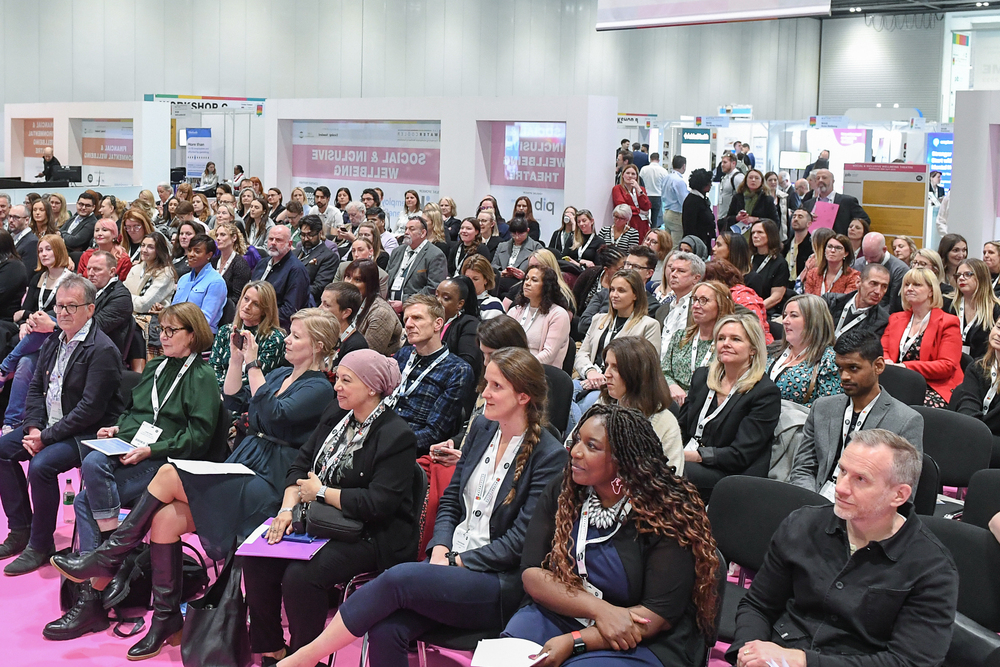
Speakers tell us what they’re looking forward to at The Watercooler Event next week
Over the last 40 years we have seen a continual increase in the percentage of women in employment. This achievement is, in part, thanks to societal and government led campaigns and initiatives to get women back into the workplace after having children.
However, this increase, twinned with the fact that we are an ageing population and working much later in life, creates some interesting challenges around women’s health and wellbeing in the workplace.
It’s no secret that women experience some rather complex life transitional stages, namely menstrual health, fertility issues and perimenopause and menopause, each presenting physical, emotional and psychological challenges. It should then be no surprise that recognising and responding to these challenges is fast becoming a critical focus for business leaders striving to foster a high-performing work environment.
Understanding the legal framework around these issues is an important starting point to ensure businesses are not only compliant with their legal obligations but protected against potential claims (and particularly given the fact that there has been a 75% increase in Employment Tribunals citing menopause-related issues, we should really be making this top of the business agenda).
But should we not be taking this even further to benefit everyone? Surely there is a societal contract to create a workplace that goes over and above the legal minimum, that places these issues at the heart of business to strive to engage, empower and enable the female workforce to not just cope with their situation but try to thrive through it?
Understanding women’s health
Menopause
Menopause is a transformative experience that brings about physical, psychological and emotional changes for those going through it. Common symptoms include hot flushes, mood swings and joint pain, but there are thought to be at least 40 potential symptoms which can change over time, making them difficult to manage and often leading to misdiagnosis.
The transition, which lasts on average between four and seven years, can have a debilitating impact, hindering an individual’s ability to enjoy daily life, maintain relationships and perform optimally at work. Indeed, the psychological impact of this life stage is the one most likely to create the biggest work hurdle but also negatively impact businesses too.
Maternity and Fertility
Another key element of women’s health and wellbeing in the workplace is the maternity and fertility minefield. Around 17.5% of the adult population – roughly 1 in 6 worldwide – experience infertility (WHO) and given the likely age range of those seeking treatment, that’s a significant proportion of our workforce.
Fertility Network UK has acknowledged that over 3.5 million people in the UK go through some kind of fertility challenge, a deeply emotional and, for some, traumatic life experience. From the practical perspective, the nature of fertility treatment (being linked to the female menstrual cycle) means appointments are often scheduled at short notice, creating a direct impact on a women’s working life and schedule.
Menstrual health
We also need to consider potentially still one of the biggest taboo topics in the workplace – periods.
It’s perhaps unsurprising that a recent survey by HR Zone found that a third of male workers believed it is unprofessional to talk about menstrual health at work, despite the fact that 1 in 3 women describe their periods as heavy.
While for some, periods are simply a monthly annoyance, for others, the physical and behavioural impact of the menstrual cycle can be so severe it leads to performance dips in the workplace – which can then become more severe during perimenopause. Many women suffer in silence, ‘soldiering on’, all the while their performance and engagement at work steadily declines.
The legal playground
So, what does this look like? What rights do employees have and what does an employer need to do to ensure they are legally compliant?
The short answer, at first look, is not a lot.
At present, there is no single piece of legislation that is applicable to menstrual health, fertility and/or menopause. An organisation has no legal obligation to allow time off for fertility appointments and there’s certainly no such thing as ‘menstrual leave’ in England and Wales.
However, other countries are taking another perspective on this. Perhaps they are being more long-sighted from a business perspective, recognising the benefits that can be achieved from taking a different approach?
Whilst the UK Government recently rejected calls from the Women and Equalities Committee to make menopause a standalone protected characteristic under the Equality Act 2010, businesses need to be aware that employees who are mistreated by their employer in connection with menopause, menstrual health or fertility treatment, can bring claims under that legislation.
Cases have been brought, and upheld, against organisations who haven’t created the right environment for their female workforce, with the Equality Act 2010 being successfully applied in several cases citing harassment and discrimination on the grounds of gender, age and disability.
With regard to fertility issues, while the law doesn’t, at present, allow employees time off for treatment and appointments, this could be about to change. A Private Members Bill was brought forward in November 2022 which would make it a legal requirement to enable employees to have time off for fertility appointments and connected purposes. This Bill is currently at second stage reading in the House of Commons and one that employers need to be aware of and ready to implement.
In addition, it’s vital to remember that if an employee becomes pregnant though fertility treatment, they have all the same pregnancy and maternity rights as other pregnancies -and an employee is still protected by law against pregnancy discrimination for two weeks after finding out that an embryo transfer was unsuccessful.
The female future
Is being legally compliant enough? Should we instead be exploring the idea of a societal contract – a contract between employees and employers that actually benefits the business interests and the employee, placed at the heart of the organisation? What would that look like?
Maybe it would involve menopause mentors – individuals throughout an organisation who can spot struggling employees, signposting to help and, perhaps most importantly, be a confidant. What about wellbeing champions who are charged with supporting and speaking up for specific areas of wellbeing for both men and women? Perhaps the answer lies in awareness campaigns that breakdown the stigma around things like menstrual health, infertility and menopause through lunchtime seminars and staff workshops or even simply awareness posters that show your workforce you recognise and understand the complex emotions and challenges women’s health and wellbeing can create.
By providing your female staff members with proactive support and a safe working environment you’re not only likely to be legally compliant, you’re also likely to experience benefits where talent attraction and staff retention are concerned. Staff who feel safe and secure at work are much less likely to look elsewhere and you can build a reputation as an organisation that empowers and advances its workforce which is only likely to bolster your employee value proposition. We need to remember that women’s wellbeing is not just about the impact on the person you employ but also on the people around them. Doing business this way is sure to bring about whole business benefit.
Small interventions can have a significant impact. They demonstrate how seriously an employer takes the challenges to health and wellbeing employees face and opens the dialogue to help reduce and remove any remnants of taboo and stigma. The result? Happier staff, empowered to perform at the best of their potential and take your organisation to the next level.
The future seems to be in our hands, and as we raise our next working generation, let’s ensure they enter a workplace that is not just compliant, but a workplace that understands, empathises and really empowers women and the complex creatures we are, so our entire workforce can benefit.
To hear more about our view on women’s wellbeing in the workplace please join us at our WaterCooler workshop where we will be joining forces with Myla Health to consider not only the legal landscape but the clinical and HR framework around women’s health and wellbeing.
About the author:
Pam Loch is Solicitor and Managing Director at Loch Associates Group. Pam set up Loch Associates Group in 2007 to respond to the need for commercial and bespoke legal and people solutions for clients. She has continued to evolve the business to respond to client needs and is now proud to have services offering solutions in all elements of HR, employment and business law.
As well as being the Managing Director of Loch Associates Group, Pam has also been a specialist, award-winning employment law solicitor for over 20 years and is a dual qualified solicitor, having qualified as a solicitor in 2000 in Scotland and England & Wales.
Loch Associates Group will be running a workshop at The Watercooler event on 23rd April from 15.00 – 15.45 entitled “Women’s Wellbeing at Work – understanding the connection between law and clinical health“. You can find out more and register to free to attend here.
You might also like:

Women’s wellbeing – are we hitting the mark?
Menopause is undeniably a hot topic. It’s one that we’ve covered regularly on www.makeadifference.media and it’s an issue that our sister event The Watercooler will be honing in on next week too.
The rising significance of menopause in the workplace
As stigma around the menopause continues to ease, more and more employers are recognising that there is much they can do to support colleagues through this stage of life.
The recently updated guidance around what the Equalities Act could mean for menopause and disability potentially adds teeth to good intentions.
Under the Equality Act 2010, workers are safeguarded from discrimination based on protected characteristics such as disability, age, and sex. If menopause symptoms significantly hinder a woman’s daily activities, they may be considered a disability, compelling employers to make reasonable accommodations and avoid discrimination. Menopausal women are also shielded from age and sex-related discrimination, as well as harassment and victimisation.
Health and safety laws also require employers to assess workplace risks, acknowledging the impact of menopause on workforce wellbeing.
Sky News highlight, that menopause symptoms have driven one in ten women out of their jobs, underlining the urgent need for supportive workplace environments. Studies further reveal that two-thirds of working women aged 40 to 60 with menopausal symptoms have experienced adverse effects at work.
Menopause at The Watercooler
Menopause featured strongly on the agenda at The Watercooler in 2023 when Natalie Beresford, former Detective Inspector and Chair of the Menopause Action Group at Thames Valley Police, shared her candid journey of how the menopause disrupted her career and personal life.
At this year’s The Watercooler Event, the agenda is moving from talk to action. Conference sessions, workshops and exhibitors will help employers attending the event find the best approach to providing menopause support for colleagues.
One of these is Managing the Menopause, who will be offering workshops, webinars and Ask the GP sessions. Visitors can sign up for their newsletter and receive a free ‘menopause-friendly workplaces’ checklist, with five new subscribers standing a chance to win a license for their Demystifying Menopause for Line Managers online course. Attendees will also be able to benefit from an exclusive discount by booking sessions before May 15th.
The Watercooler Event is taking place at Excel in London on 23rd & 24th April. You can find out more about the exhibition and free to attend conference sessions and register here.
You might also like:

Tackling Menopause in the Modern Workplace

Stuart Hughes is President and Chair of Council at the Institution of Occupational Safety and Health (IOSH), as well as his day-job as Head of Health & Safety at Mercedes-AMG Petronas Formula One.
We spoke to him ahead of his Watercooler appearance, where he’s talking about ‘Aligning HR, reward and wellbeing with the organisation’s commercial strategy’.
Something that became immediately apparent in talking to Hughes is how passionate he is about committing to positive societal change through business; as you’ll see from this Q&A, Hughes is a firm believer of business as a force for good and holds extremely progressive, positive views on the role of wellbeing, health and safety to make a difference.
While many wellbeing professionals are pursuing the Holy Grail of measurement and clear ROI for any spend on wellbeing, Hughes’ questions whether we, as an industry, are indeed too focused on this and making a real difference depends on genuinely caring for people, regardless of the ‘pounds and pence’ you might get back…
What is most important to you when it comes to workplace wellbeing? What would you like to see the industry talking about more?
I’d like to see recognition of the need for a holistic approach to wellbeing – which considers all aspects of an individual’s health from physical, to mental, to recovery rates after intense work – and for this topic to be more a part of industry discussions.
In my opinion, there’s sometimes an over-focus on ‘what is the return on investment for the delivery of our health and wellbeing programme’? Actually, sometimes I think the question would be better framed as ‘what is the impact for the workforce, and the sustainability of the organisation?’, rather than ‘do we get our pounds and pence back?’
That’s really interesting as we hear a lot about employers chasing better measures of programmes…. Tell me more….
Some people might say my questions might be naive for businesses to address – but, actually, if you want to be the employer of choice in future then how you care for people under your charge, and making that better than what another employer does, is going to make you stand out.
One of the things, for example, I often think about is this question:
how can we transfer knowledge, skills and capability in people’s wellbeing long beyond their time working for my organisation?
Tell me more about why that’s so important to you…
It’s about helping people give their best within the work environment, but also being useful members of society and their community and being able to give their full to friends, family, loved ones or whatever is important to them. Our vision is for people to look back, 40 years on, at their time working for us and say ‘there’s things I did there that positivley impacted my quality of life as I got older’.
Personally, I think this is an obligation that organisations should embrace.
So, are you saying their wellbeing is more of a moral obligation than a commercial one?
It’s about performance, ultimately.
In a high performance organisation, like ours, you want people to thrive, but if you only look at that in the narrow lens of the world of work, you’re missing a lot of other inputs that make a difference and can help people have a greater quality of life.
The more things that people are doing outside of their work environment, that help pique their curiosity, or keep them perhaps in a better mental state of positivity and enjoyment, the better. It’s the longterm view and the cumulative impact of all the choices a person makes over days, weeks and months.
As employers, it’s our job to give them the information and tools so that they can, on balance, make good decisions and good choices. Ultimately, if employees are on that kind of track for a healthier and happier lifestyle I think that creates a more productive, engaged work environment.
You are talking about an employer making a positive mark on an employee’s life long term. Do you feel that desire is something that is common in workplaces from your experience?
I think it’s fairly unusual, but that holistic approach is starting to become talked about more broadly. And, with my IOSH hat on I’d say that 20 years ago wellbeing might not necessarily have been within the sphere of occupational safety and health, and now it is. We understand people that are in better physical and mental health will generally make better decisions at work, that should reduce the potential for exposure to harm and that these things are interconnected.
What other issues are you particularly banging the drum for in terms of your presidency of IOSH?
Ah, lots! We’ve just released a ‘Towards a safe and healthy future of work’ report focusing on how we make use of the opportunities and challenges the future presents in terms of changes in technology, and where people work, and what that means for the profession.
I have three main focus areas: recognising the value within our volunteer network through a campaign called ‘By the members, for the members.; challenging the profession to enhance the research agenda to turn academia into useful instruments of practice; and, finally to promote Occupational Safety and Health and a fundamental human right.
Then there’s the ‘No time to lose’ campaign which is about making sure people are not exposed to harmful substances. And then we’re starting to see a number of bodies come together to look at how we effectively deal with the challenges of mental health, and that workplaces attend to the elements that they can control to reduce the burden of stress and burnout on their employees.
Also, another big issue is how do you ensure that you communicate well for your neurodivergent employees.
Any areas you’d like to see companies step up?
Yes – health has always been what I call an ‘ugly sister’ of safety which hasn’t had as much time and attention. I think this is because, in part, because some ‘harms’ have a long latency period, so a workplace might be the cause of a chronic illness but it won’t develop for many years. I’d love to see organisations step up and challenge themselves to commit to making sure things they’ve done haven’t caused anyone harm, even when those people are outside of their employment now. But that’s a big commitment.
What are you going to be talking about at The Watercooler?
The interplay of HR and wellbeing, and how you get return on investment. I think it’ll be interesting as we’ll have different views.
In terms of return on investment, I understand the business need to demonstrate that you get value out of the investment that you make. But I think there’s perhaps a different way to view those outcomes. I think it’s more about demonstrating care for individuals and the long term impact of what you have in place.
Yes, we’ve got to look at improvements in our organisations. But, perhaps more importantly, we should be looking at the secondary impacts to society of meaningful and well targeted wellbeing programmes. For instance, they could have an significant impact in terms of reducing the needs on services like the NHS. That’s powerful.
What about the ISO 45003 – what do you think of this framework?
If you don’t know where to start it’s probably a good place to get some insight into what is potentially impactful and effective. But I’m not inclined to apply a blanket framework to all organisations because they’re individually all very different so it’s necessary to work out which bits of it really work for you.
Personally, I think we should be looking at the needs of the organisation and people within it, and tailoring to those, rather than taking a blanket standard and applying it.
And you believe, as well as adhering to rules and regulations, Health and Safety professionals need to be creative – is that right?
Yes! I think it’s really important. Rules and regulations are fairly black and white but there’s a lot of grey in there and the grey is where you can be creative in looking for alternate ways to do things. For example, in the way we communicate and engage with people and how we tell stories that are meaningful, rather than just quote statistics. That’s the way to generate change; storytelling is something I’m passionate about.
I think alot of people who go into a career in health and safety do it because they want to make a difference. Then they find themselves curtailed by systems, frameworks, documentations…. I’d like to see us be a bit more innovative and creative and imaginative in terms of how we actually influence people and work with organisations to, ultimately, get safer and healthier outcomes.
Clearly you have a very strong social conscience, which is great to hear. What message would you like to get out to your fellow professionals in this space?
Anybody that’s working within an organisation that has a human focus should really consider the impact of what they do and the potential to make societal change through the world of work.
We spend more time at work than potentially anywhere else and that means that we can have a significant impact through the provisions that we put in in place for people. We need to look more at the interconnectedness of work and society.
You might also like:

Are you too focused on ROI and not enough on your wellbeing impact? IOSH President & Mercedes Executive Stuart Hughes calls on the industry to step up for society
A brief dive into Gen Z’s workplace satisfaction, and how it connects with younger people’s declining mental health.
The latest generation to enter the workplace is Gen Z, and they are often given a hard time. Considering they haven’t lived through the same “hardships” that previous generations have, and with the world being more comfortable than ever…why is there so much cause for them to complain? There is now even a trend of HR departments favouring older hires over younger counterparts. From Nordic employee wellbeing platform Kara Connect, Tobba Vigfusdottir shares her thoughts on why this generation might be struggling, and how employers can better navigate this new and largely misunderstood section of the workforce.
What is the problem?
People in their 20s are statistically more likely to be off work with ill health than employees in their early 40s. This trend has developed for several reasons, but it predominantly comes down to Gen Z being more likely to struggle with mental health issues. This, in part, is due to having grown up with social media; studies indicate that engagement with social media leads to higher rates of depression, self-harm and suicide. This worrying trend has developed to such an extent that, as reported by the Guardian, UK ministers were just last week discussing banning the sale of mobile phones to children under 16.
As digital natives, Gen Z are also equipped with the ability to navigate a vast sea of news and information; crucially including insights into equality and workplace conditions. Unlike prior generations, who often adhered to a “grin and bear it” mentality, Gen Z recognises that these approaches no longer make for a comfortable existence. They understand the toll that excessive work can take on their long term health, and are unwilling to compromise their wellbeing for the sake of an entry-level position unless the potential career trajectory is clear. Prioritising their health, many Gen Zers may not necessarily aspire to claim C-suite roles. Besides the career aims, the fact also remains that access to adequate healthcare and mental health support remains a luxury. It is beyond the reach of many young people due to financial constraints and extensive waiting lists within public healthcare systems.
These problems are often compounded by the response the wider world greets them with. Trivialising Gen Z’s habits and labelling them as “unable to cope with work” disregards the significant societal and economic factors that affect these employees. For example, navigating the move from education to employment whilst trying to keep on top of financial pressures, expectations of success, and higher rates of mental illness.
The challenges facing young professionals
The problems around Gen Z’s mental health stem, unsurprisingly, from a variety of factors. As mentioned, the rise of social media has had a profound impact, affecting young women more than men. They are exposed to more and more of the same sensational, perfected material. This idea of curated realities and constant connectivity leads to heightened stress levels, and potentially impacting brain development. This phenomenon is evidenced by the aforementioned alarming increases in suicide rates and depression.
People in general suffering with mental health may consequently also find themselves unemployed or in low-paid jobs. Having been exposed to social media their whole lives, resulting mental health issues often hinder Gen Z’s educational aspirations – whether by affecting concentration, attendance or academic performance. This ultimately limits job prospects. Then, for those who have begun their career, managing workplace stress and maintaining performance can be challenging even when in jobs. This leads to its difficulties, for example in securing advancement opportunities. Despite efforts to reduce stigma, discrimination persists in many workplaces against those who struggle with their mental health.
Strategies for employers
A big caveat for employers is that misunderstood and exploited workers no longer accept being taken advantage of. This generation expects to be treated with more respect. Psychologists are also seeing a great rise in Gen Z having a lower locus of control. This means that they don’t believe that they can impact their own futures, and are more likely to think that outside factors determine their fate – this could be luck, people in higher positions, or their academic success or failure. These factors together have led to a rise in silent quitting, where employees leave the workplace without even telling their line manager. This happens because they either don’t think it makes a difference, or because they are uncomfortable to approach their supervisors.
Luckily, there are workplace leaders who engage with any discrimination, and seek to push back against this phenomenon and how employees are treated. Here, I outline some of the many ways in which managers, HRs, and bosses can help to support Gen Z – and it is often as simple as recognising the root of the problem and showing understanding.
Creating a culture of awareness and support is essential. One can establish wellbeing support systems, or promote empathy amongst colleagues, but opening discussions about emotion and coping strategies can help build trust. Equally valid, of course, are those people who don’t immediately feel comfortable being part of something public.
Comprehending Gen Z’s mindset is key. Employers should recognise the myriad concerns that young people have. This includes, but is not limited to: job security, professional advancement, as well as transparent lines of communication around pay equity and PTO. Different communication styles are needed in companies hiring Gen Z – it is essential for success, both for them and the company, that grievances are aired and workers can explain what is bothering them. Also, it is important to remember that people who are anxious or dealing with mental health problems work better if they are told clearly about the job, benefits and where it can lead. They are not even afraid to ask “what is a job” – and are not looking for the location, or time in the office or at their desk – they want to know what is expected of them, and employers need to be able to explain.
I have already alluded to Gen Z’s wider education and digital proficiency. Employers should adapt to their preferences by implementing up-to-date tools and messaging platforms. This approach, as well as enhancing efficiency, also demonstrates a commitment to meeting Gen Z’s preferences. Beyond this, employers can go further and actively involve Gen Z in digital transformations. This gives employees confidence; their unique qualities can actively contribute to the work environment.
The bottom line is that while some corners of the media seem to feel obliged to peddle out the rhetoric that Gen Z’s workplace problems are overplayed, I’d like to emphasise that there has never been a more important time to prioritise mental health and wellbeing in the workplace. There are wonderful (and successful) initiatives in Nordic countries, aimed at achieving a better work-life balance. The bigger the reach of projects like these, the better. By strategising like this, employers will reap the benefit of supporting their employees, who in turn will be in a better position to support them.
About the author
Tobba Vigfusdottir is CEO at Kara Connect. Tobba holds an M.Ed in Educational Psychology from the University of Washington in Seattle, USA and a B.Ed. from the University of Iceland, She has worked as a political advisor to the Minister of Education and a project manager at the University of Reykjavík. Tobba is the Vice-Chairman of the National Theatre of Iceland and has sat on numerous public boards, including the Reykjavík Energy Company and Bus.is.
You might also like:

Navigating young people’s mental health; how to understand and support Gen Z in the workplace
In this Q&A with Mariyana Zhou, HR Director at fintech firm 1inch Network, who is speaking about AI at The Watercooler, revealed her struggle in trying to deliver a genuinely flexible and personalised wellbeing benefits package to her employees.
On the back of her comments and challenges, we reached out to leading benefits provider Gethin Nadin, Chief Innovations Officer, Benefex for his response, and his advice on how to get the best out of benefits, and how to make them more flexible and personal.
Don’t confuse choice with personalised support
This is a common mistake Nadin, with some employers falling into the trap of thinking that giving employees many choices is the same as giving them a personalised benefits experience. It isn’t.
As he says:
“To create personalised health and wellbeing experiences, we need to ensure that either employees can customise their experience themselves, or the employer facilitates this personalisation through data.”
True personalisation comes from using data to offer individual employees a benefits experience that is based on their specific preferences and needs. He likens this to the way consumers are already used to be served personalised choices by the likes of online streaming services or the way online book retailers serve up new suggestions:
“A library has a choice of books, but an online bookshop will use your spending history and book ratings to personalise your experience. We (benefits providers) should now be able to surface a benefits experience that is bespoke – so employees are suggested the benefits they may be interested in and shown how certain benefits can help them and their lives.”
Technology should save employers hundreds of hours in terms of admin time
According to Nadin, the average employer spends around 20-25% of the cost of their payroll on benefits, making benefits a huge expense.
“This expense should be managed carefully to get the most out of that investment,” he says, adding the technology is available to save clients a huge amount of time in admin and can “be very effective at delivering high quality, highly engaged benefits schemes”.
Moreover, a good benefits provider, he says, will not push a product on you but will help you to design and build a scheme with as little impact on your and your team as you need.
“Many benefit technologies now offer varying levels of self service, so the employer can flex up and down how much they get involved based on resource their end or appetite to get involved,” he says.
A mindset change towards benefits is necessary if they are really to make the biggest impact
This is a point that Zhou made in her Q&A, and that Nadin agrees with adding that: “We also need more boards and CEOs to understand that benefits are no longer just about reward – they are about talent management, productivity, wellbeing, sustainability, etc.”
As he says, used intelligently, benefits don’t just attract people to an organisation, but they can also be used to attract and retain certain talent pools, and boost employee wellbeing and subsequently productivity.
“They are a core and growing part of an EVP and require us to invest more in them as a result,” he says.
Your benefits provider should be able to advise you on the best benefits to offer
As Nadin says, benefits providers via employers should have access to millions of data points which can give insight on what benefits and benchmarking should exist in a client’s scheme.
“A good provider will not only be able to surface that data to help you choose what benefits to roll out, but they’ll also show you levels of eligibility or entitlement and even predict cost savings – all based on a decade of real customer data. Combining real world data from other, similar employers as well as capturing employee preferences is a strong position to be,” he says.
Good data is key
“You should have benefit specific employee surveys as well as post-enrolment satisfaction surveys. It’s also good practice to get a working group of random employees who can give you qualitative data, not just quantitative,” advises Nadin.
Don’t just consider what your employees want, consider what you want them to have
Again, Nadin makes this point that benefits can drive “better outcomes” for employers, not just employees. As an example, he encourages you to ask the question: what benefits will reduce turnover or lessen absence rates?
Make sure your provider enables you to choose benefits when needs arise
According to Nadin this is really importance and often known as “anytime benefits”. They are set up outside of enrolment periods so employees can still choose them.
Employers should shop around and, even when budgets are tight, approach some of the established players for deals
Nadin concedes that perhaps smaller employers don’t get as much choice or flexibility when it comes to benefits, and there are newer, smaller vendors which operate from fixed choice models with very little customisation. However, he also adds that “many enterprise providers are keen to work with fast growing, small employers too”.
“There are true flexible or online benefit providers, but these are few and far between. Most of the players are now fixed models where an employer chooses from a “set menu”, rather than having a scheme that is as individual and flexible as most employers are,” he says.
Finally…
Finally, in response to Zhou’s comments that smaller vendors tend to be more flexible, he says this doesn’t chime with his experience, in which he’s found the opposite. And, with regard to Zhou’s desire to find a package that will simplify and communicate all the benefits, according to Nadin, this does currently exist, as does “personalised content and communications based on the individual”.
No doubt this will be a hot topic of discussion at The Watercooler, which Zhou will potentially touch on in her session on ‘How to use AI to support wellbeing, HR and grow the employee value proposition’. Watch this space…
You might also like:

Benefits expert view: overcoming challenges to deliver personalised, flexible wellbeing benefits
Ian Macleod Distillers (IMD) embarked on a monumental journey to elevate their workspace, moving from their former office to the impressive Peter Russell House in Broxburn, West Lothian in an impressive new development. The new headquarters, with its architectural nod to distillery shafts, promised to accommodate IMD’s expanding portfolio of premium Scotch whisky, gin, and rum brands within its 10,000 square feet of dynamic office space. However, a challenge lay in not just creating a visually stunning workplace but also ensuring the well-being and productivity of their employees. Thus, began a collaboration that would introduce a breath of fresh air into their corporate environment.
Understanding the pivotal role of greenery in enhancing both aesthetics and atmosphere, Ian Macleod Distillers enlisted the expertise of Anchorpoint Interiors, renowned for their corporate and commercial workplace designs. Building on their successful past collaborations, Benholm Group was brought in to infuse greenery into the heart of the office renovation project.
The Solution: A Verdant Oasis Amidst Glass Towers
Benholm Group embarked on a mission to bring the outdoors in, utilising innovative green solutions to complement the architectural grandeur of the space. At the entrance, towering moss walls, reaching a height of 20 feet on either side of the reception area, immediately captivate visitors, setting the tone for a naturalistic journey within. These living walls, meticulously crafted with an assortment of moss types, create a stunning visual tableau against the backdrop of lofty ceilings. A scaled-down version of this green marvel adorns the break-out room upstairs, providing a tranquil retreat for employees.
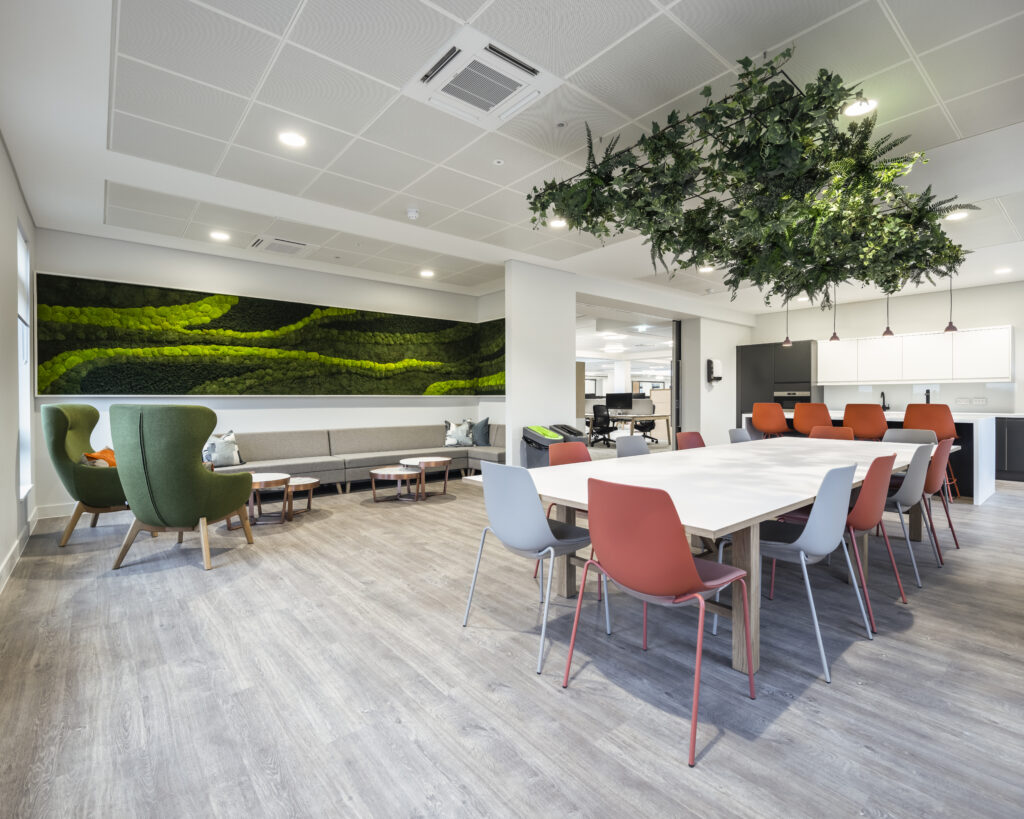
Central to the foyer stands a majestic 13-foot live Bucida Buceras tree, a living sculpture that not only adds to the aesthetic appeal but also imbues the space with a sense of serenity. Beneath the staircase, typically an underutilised space, Benholm Group ingeniously introduced a terrarium-like floor display, transforming it into a focal point of interest.
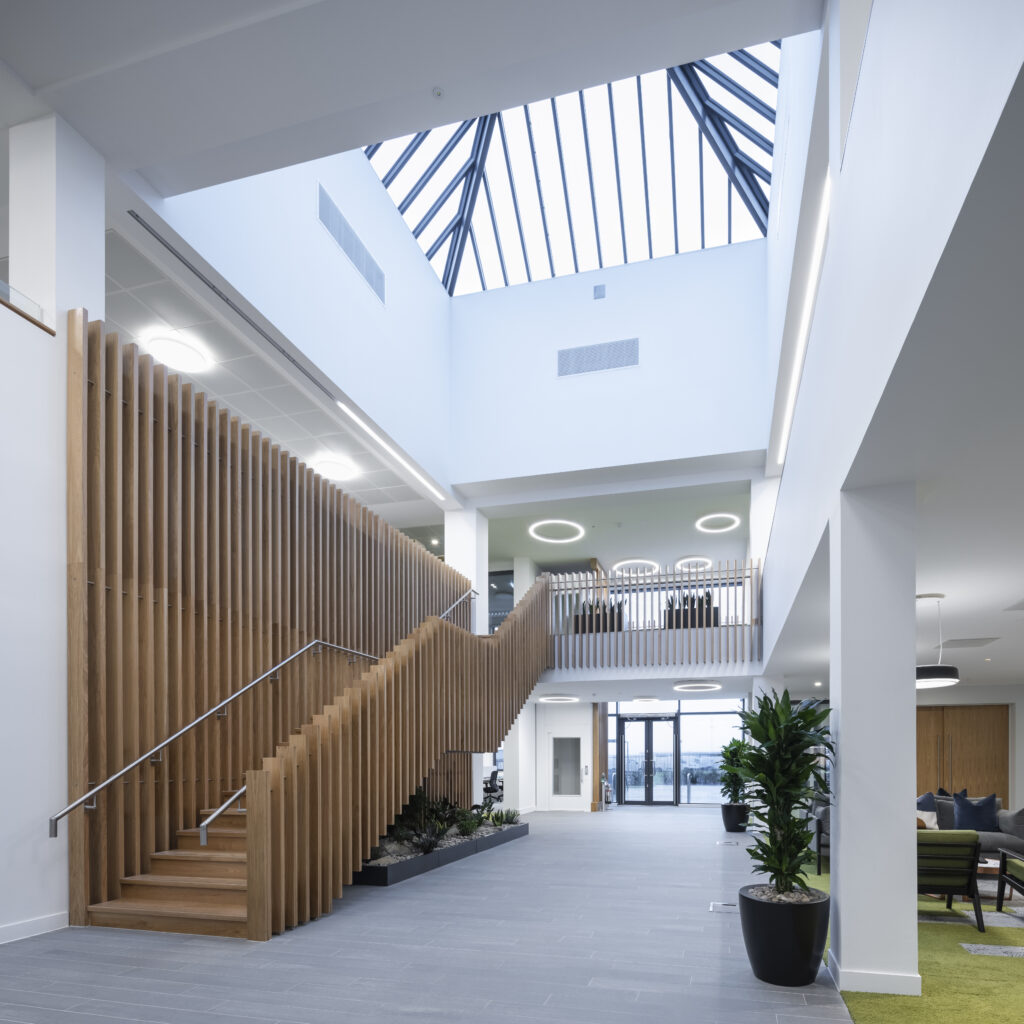
Artful arrangements of diverse planters, showcasing vibrant foliage in various styles and sizes, adorn both floors, strategically positioned to optimise visual impact. These green installations not only enhance the ambiance but also contribute to the overall well-being of occupants.

The Results: A Testament to the Transformative Power of Greenery
For Ian Macleod Distillers, the transition to their new headquarters marks a significant milestone in their journey of evolution and growth. With a legacy spanning over 80 years in the spirits industry, they understand the importance of embracing change to secure their future. Their new HQ, characterised by modern office spaces, gin development labs, and innovative design elements, positions them at the forefront of industry innovation.
Through collaboration with Anchorpoint Interiors and Benholm Group, Ian Macleod Distillers has succeeded in creating a workspace that seamlessly integrates nature with modernity. From the lush greenery that greets visitors to the meticulously curated plant installations, every aspect of the design reflects a commitment to fostering a vibrant and inspiring environment.

Brinsley Clarke, Sales & Precon Executive at Anchorpoint Interiors, acknowledges the pivotal role played by Benholm Group in bringing their design vision to fruition commenting “The flexibility, support, and expertise provided by Benholm Group have been instrumental in realising their concept design within a demanding project timeline”.
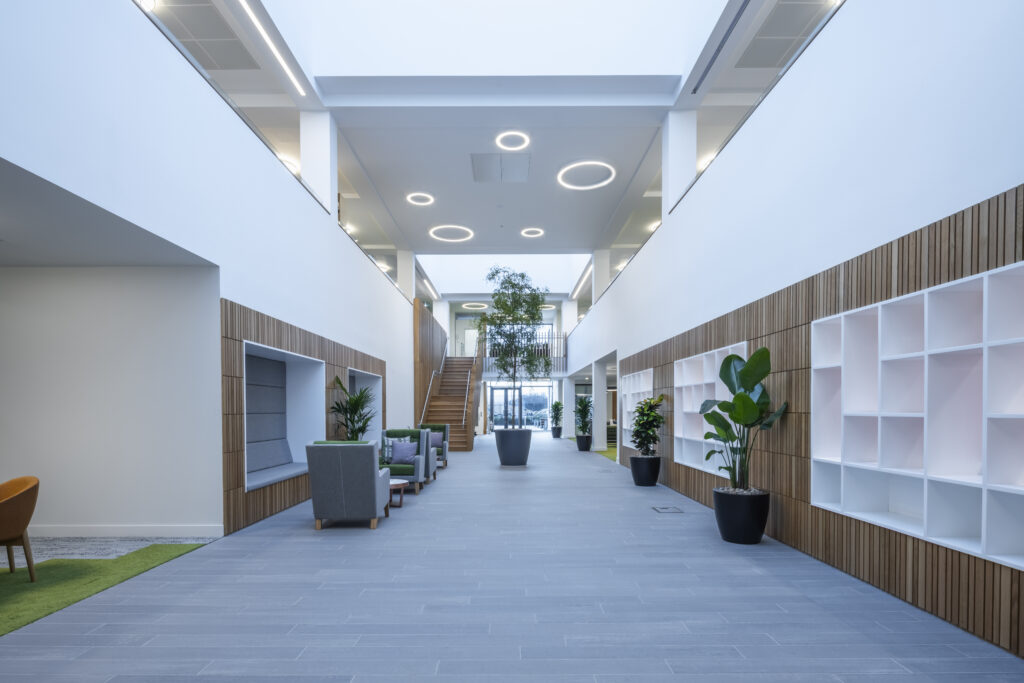
The transformative impact of greenery on interior spaces cannot be overstated. Beyond mere aesthetics, plants have the power to rejuvenate, inspire, and enhance well-being. As businesses strive to create environments that nurture creativity and productivity, incorporating green elements into the workspace emerges as a compelling solution.
Are you ready to transform your workplace into a verdant oasis? Contact Benholm Group today or visit us at The Office x Watercooler Event to explore how greenery can breathe new life into your office environment. Email mail@benholm.com or visit www.benholm.com
You might also like:
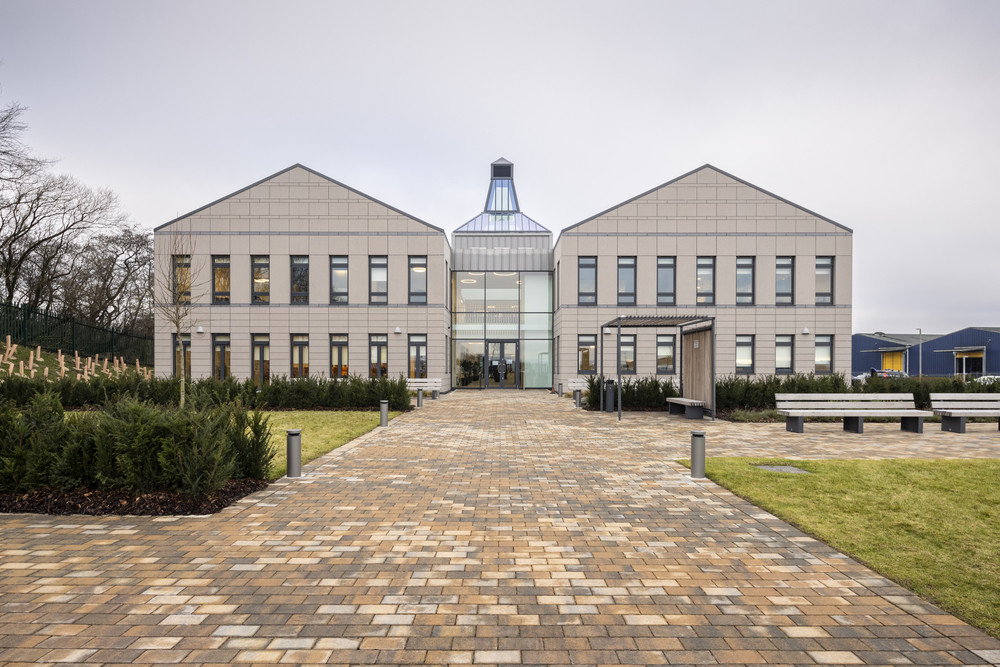
Benholm Group Infuse Ian Macleod Distillers with Greenery

Mariyana Zhou is Head of HR at fintech firm 1inch Network. She is always willing to share lessons learned – like this conversation we had with her about her struggles in delivering genuinely flexible, personalised benefits to her employees and her desire to offer them a ‘Chinese Menu’ style approach.
As you’ll see from the Q&A below, she hopes that AI will help her on this front – and, indeed, at The Watercooler, she will be speaking about ‘How to use AI to support wellbeing, HR and grow the employee value proposition’…
Tell me about your ‘Chinese Menu’ approach to benefits….
Of course! Well, instead of pushing out the same benefits to all employees, I advocate for a more personalised approach. I liken it to having a ‘Chinese Menu’ where people can pick and choose exactly what they want. It’s really personal and really putting the individual at the centre and giving them what is of true value to them, rather than just presenting them with a set menu of limited options to pick from. Basically, it’s the opposite of what I call ‘benefit washing’.
How difficult or easy has it been to attain your vision of putting the employee at the centre and creating that really personalised benefits experience?
It’s been extremely difficult. I believe that’s because it requires a mindshift change from organisations and professionals and the benefits administrators.
Also it’s difficult because benefits departments are traditionally under staffed and under funded, so the reality of the situation is that everyone is always looking for the quick win.
Can you tell me a bit about your experiences so far in trying to implement a highly personalised benefits package? Why has it been so difficult?
It’s really down to this mindset and organisational change which has to come from the board of directors and the executive level.
For me, we need to go from saying ‘hey, instead of buying all these benefits that may or may not be valuable to people, let’s put the employee first and find out what is valuable to individuals’.
What I’ve found is when you put the employee at the centre of the conversation, then you start asking different questions about benefits. For instance, you ask the employees directly ‘what is important to you? What do you want to be offered to help with your work life balance?’
You get very different answers coming forward from this approach. You find out more about your workforce and what is value add for them at this stage of their life. For example, it should come as no surprise to anyone that we have an aging population and elderly care responsibilities are on the rise, how are you helping the employees who are careers?
Have you been asking employees these questions then?
Yes, I have been doing this for a couple of years now.
Tell me more about the different answers you get from employees about benefits for wellbeing?
The most interesting thing is that we’ve found there’s sometimes a disconnect between what people think they want, and what they actually end up needing.
Our staff surveys said that people wanted the really fun benefits, like free yoga classes. But what we actually found is what they actually need, and valued most, were the benefits that really came good in hard times.
For example, we’d have people saying to us ‘my mum is ill, do I have medical cover for her?’ And, in that panic time, what they really value is being able to find that information really quickly and access the benefit easily.
Overall, what we’ve found is employees need some really core benefits so that when the worst happens, they have one-to-one support.
How flexible have you found the vendor market to be in helping you realise your dream of the ‘Chinese Menu’ approach to benefits?
Not flexible. I’m finding vendors work backwards rather than with the client in mind. Typically they’ll say ‘we have created this great benefit, which does this and this’ but I don’t need the whole product.
The trouble is, I’m usually talking to Business Development and Sales Departments, so they have targets linked to the product they have, so they inevitably work backwards and want me to buy the whole product, rather than cherry picking the bits I actually want.
But, as an employer, you can’t avoid not having a vendor because you can’t build your own benefits.
It sounds like a lot more work for you as a client to deliver personalised benefits, is that right?
Yes, huge amounts of work.
Have you got any good experiences of working with vendors to produce personalised benefits?
Yes. When we were launching our new pension offering in the UK what we found, through speaking to our people, was that they didn’t necessarily want pensions at all.
I should add the caveat here that this is our workforce demographic and I believe this could be very different for other organisations. What our employees really wanted was financial advice because there’s this huge stigma around financial wellbeing and no one talks about it. (There are a lot of people struggling with rent, bills or with big amounts of personal debt.)
I ended up talking to a large financial services company and negotiating a completely unique product, which included a one-to-one session with individuals to help them organise their savings plan for the future. That could include a pension (as well as information on ISAs, etc.), but the important thing is it’s completely independent advice personalised to them and not linked to the company or any particular products.
This benefit has been so successful that we even get employees asking us questions like ‘can I give this benefit to my brother or my friend?’
Have you found any differences between the large vendors and the smaller vendors of benefits packages?
Smaller ones are usually more willing to accommodate personalisation. They seem happier to say they could change details, or give us more options. They’re better with pricing as well as they have more flexible models.
Apart from personalising benefits, are there any other big challenges you are facing when it comes to benefits?
The biggest question that I’m currently trying to solve and don’t know how is ‘how do we communicate what benefits are available to employees for their particular situation?’
What I want is something that can simplify all the benefits, the policies and the terms and conditions so a person can easily access what they need quickly, when they need it, in a human language. I’m imagining (hoping!) the answer may come in a AI type of chatbot, but as far as I know, it doesn’t exist yet.
So, going back to the point about accessing benefits in tough times, that would mean someone could go into the benefits system and say ‘my mum has just passed away, how can you help?’ And then the chat bot would instantly tell the individual about their bereavement leave and counselling service, complete with all relevant telephone numbers, and any other benefits. (Pulling in relevant information from different policies and vendors.)
Basically, I’d love a system where employees just input their need and the system automatically feeds information back to them, going through the whole ‘Chinese Menu’ instantly and in a personalised way for that individual’s situation so they know how to access the benefit.
And in all your research you’ve not come across anything like that yet?
No. I’m hoping the US market will come up with a solution first! I’m keeping my eyes on them…
You may also like:
